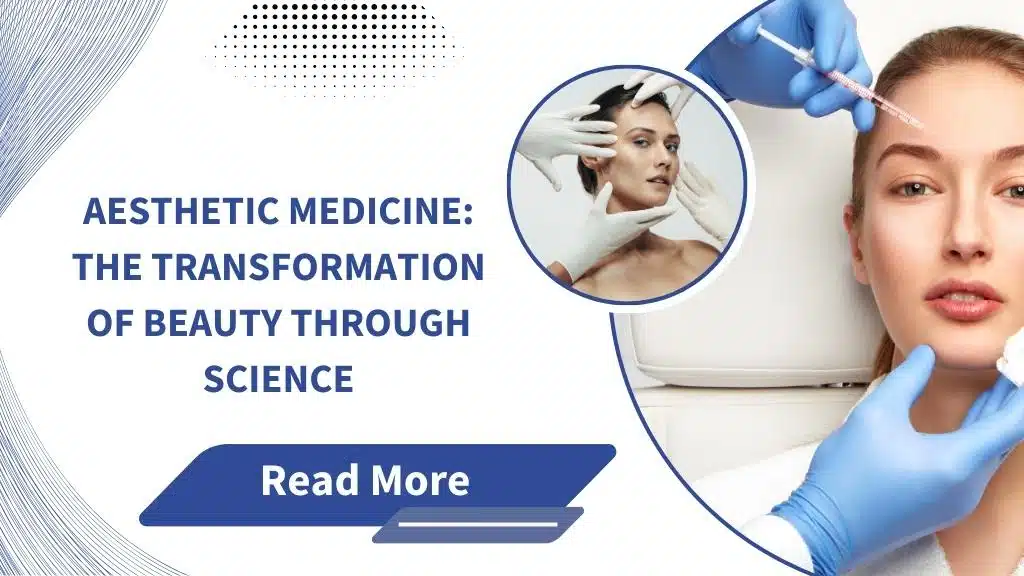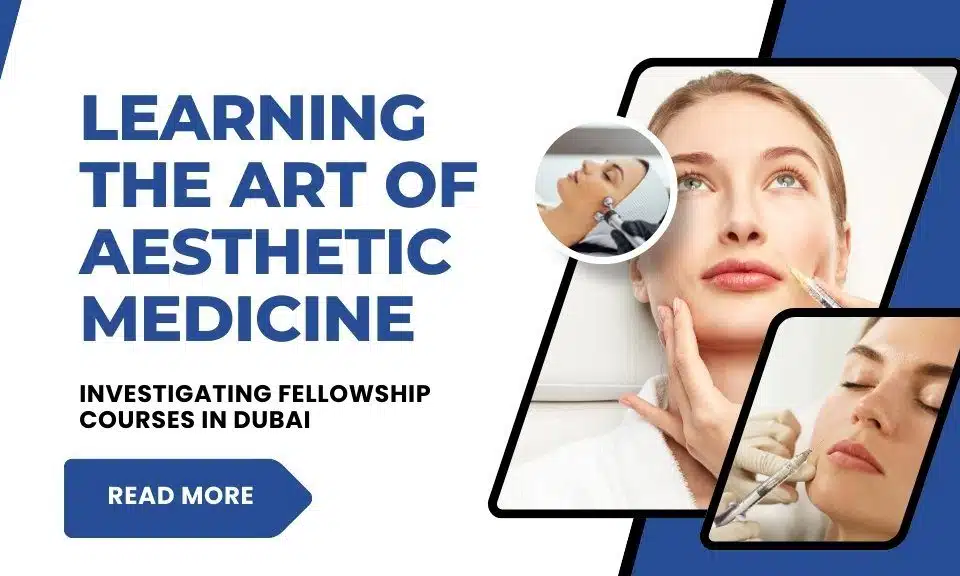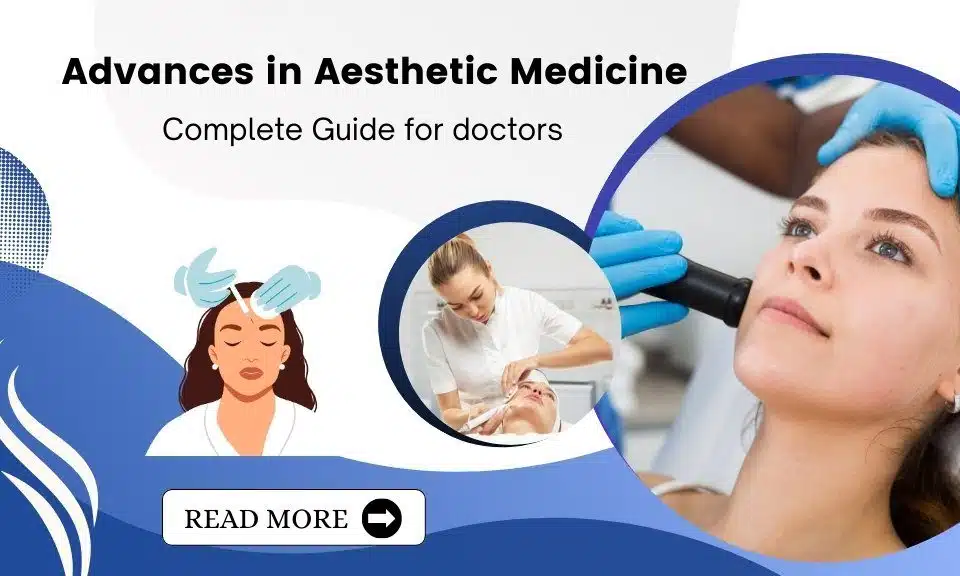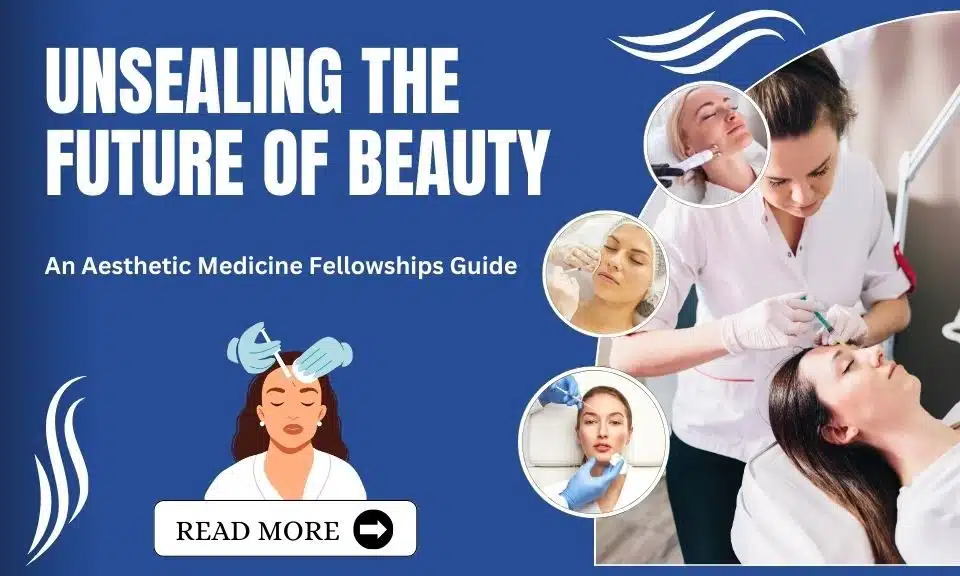- Toll Free Number:
- +91 7669331123
- info@ilamed.org
Aesthetic Medicine: The Transformation of Beauty Through Science

Bring a New Dimension to your Gynecology Practice with ILAMED’s Cosmetic Gynecology Program.
November 7, 2024
World of Medical Cosmetology
January 16, 2025Aesthetic Medicine has emerged as a fast-growing field that combines the art of beauty with the precision of medical science. The growing need for non-invasive and minimally invasive cosmetic treatments increased the demand for qualified and skilled Aesthetic Medicine practitioners in various parts of India. This is a development that resulted from the spurt in institutes focusing on comprehensive Aesthetic Medicine Courses and training programs.
One is ILAMED, Institute of Laser & Aesthetic Medicine, which has provided leadership in Aesthetic Medicine education for over two decades. ILAMED offers a large array of Aesthetic Medicine Courses, cosmetology, surgery, gynecology, and dentistry and caters to licensed cosmetologists, physicians, surgeons, and dentists who aim to explore and achieve scientific excellence in these arenas.
Aesthetic Medicine Procedures: In-Depth Overview
Aesthetic Medicine is the technique that is created with a wide variety of treatments to enhance physical appearance, improve the quality of the skin, and increase general patient satisfaction. There are three broad classifications for these techniques: noninvasive, minimally invasive, and invasive. Subsequently, further details on each procedure.
Non-Invasive Procedures
1. Chemical Peels
- Description: A chemical solution is applied to the skin, rendering it to exfoliate, and finally, peel off.
- Advantages: It smooths and unifies the texture and pigment, melting more fine lines, pimples scars, and pigmentation issues.
- There are superficial (shallow), medium, and deep peels, depending on the required result and the condition of the skin.
2. Laser Treatments
- Definition: There are various lasers that target specific issues with your skin.
- Applications: It can be utilized to address sun damage, age spots, wrinkles, and uneven skin tone. Laser Hair Removal also presents one of the very common applications.
- Types: Ablative lasers remove layers of the skin, and non-ablative lasers stimulate collagen in a non-destructive way to the surface.
3. Intense Pulsed Light (IPL)
- Description: Works by using the broad spectrum of light to address a number of different skin conditions.
- Benefits: This treatment works well for tightening, reduction of redness and other pigmentary conditions, plus improving the overall feel of the skin.
- Mechanism: IPL is released in pulses of light that penetrate into the skin. There, this light stimulates collagen build-up.
4. Microdermabrasion
- Description: A non-invasive mechanical exfoliation which entails the removal of dead cells that is performed using fine crystals or an end diamond-tipped wand.
- Benefits: It softens the skin texture, reduces fine lines and pores, and allows for more product penetration .
- Procedure: A series of sessions are usually recommended to achieve the most optimal results.
Semi-Invasive Procedures
1. Botulinum Toxin Injections (Botox)
- Description: Injects a purified protein into specific facial muscles paralyzing them for a period.
- Benefits: This reduces the appearance of dynamic wrinkles, crow’s feet and frown lines.
- Longevity: Effects are usually seen after a period of 3-6 months before further treatment is needed.
2. Dermal Fillers
- Definition : Liquids for injection that replace lost facial volume and fullness.
- Benefit : Removing mild wrinkles. Replacing lost facial contours in the cheeks and lips. May enhance depressed scars.
- Types : Hyaluronic acid fillers (Juvederm, Restylane), collagen stimulators (Sculptra), calcium hydroxylapatite fillers (Radiesse).
3. Thread Lifts
- Description: It introduces dissolvable threads under the skin to lift sagging areas.
- Benefits: It provides immediate lifting effects with minimal downtime and will over time promote collagen production.
- Procedure: The insertion of the threads is strategically placed in targeted areas-such as the cheek or jaw line.
Minimally Invasive Treatments (Performed by Experienced Specialists)
1. Liposuction
- Definition: It is a surgical procedure of eliminating unwanted fat deposits around certain body areas by suctioning.
- Benefits: Contouring of the body by removing fat deposits that are resistant to diet or exercise.
- Methods: Tumescent liposuction, UAL, and LAL.
2. Rhinoplasty
- That surgery delivers a cosmetic or functional reshaping of the nose, which could be said to correct breathing difficulties.
- Benefits: Alters size or form to facilitate balance of the face; may impact nasal function if necessary.
- Recovery: Swelling generally subsides within a few weeks; final results are several months away.
3. Facelift (Rhytidectomy)
- A surgical procedure that smooths loose face skin and erases most signs of aging on the face.
- Advantage : The procedure gives one the look of youth again through the lifting of sagging tissues and can be combined with additional treatments such as eyelid surgery.
- Duration for Result stability: Different from person to person, this procedure can last for 5-10 years.
4. Breast Augmentation/Reduction
- Definition: A surgical augmentation or reduction of breast size using either implants or procedures for tissue removal.
- Augmentative Benefits: helps increase the volume of your bust and the body shape, which causes improvement in self-esteem among many women.
- Benefits of Reduction: reduces the pains caused by heavy breasts; improves body dimensions.
Aesthetic Medicine encompasses a wide array of procedures that cater to individual needs in cosmetics. Such procedures include non-invasive chemical peels and surgical rhinoplasty, thus representing more than just an effective means to enhance beauty but to enhance self-confidence as well. As technology and techniques evolve in the field, this necessitates keeping updated on choices made in how patients are kept safe and treated effectively.
The Necessity of Aesthetic Medicine Training for Healthcare Practitioners
Healthcare practitioners have come to realize the growing need for aesthetic treatments. There is increasing interest in ensuring that these services become part of health care given the demand. Aesthetic Medicine Training helps increase patient satisfaction and creates new ways for revenue generation. Here are some key reasons as to why Aesthetic Medicine Training is important to healthcare practitioners:
- It creates a demand for the facility since more people get interested in seeking aesthetic treatments to enhance their personal appearances. Eventually, their health professionals can respond to this new demand.
- Help Diversify Service Offerings. Providing aesthetic treatments opens a room for health professionals to diversify their services and compete more vigorously in the dynamic healthcare arena.
- Improved Patient Outcomes: The comprehensive training in Aesthetic Medicine equips healthcare professionals with adequate knowledge and skills for the safe and effective performance of treatments in an individualized manner that establishes improved patient outcomes.
- Revenue Generation for the Practice: Adding aesthetic treatments to a healthcare practice will create new alternative streams of revenue to support the overall economics of the practice.
- Builds Patient Loyalty: Good aesthetic medical treatment gives a huge chance of lifetime relationships with the patients to the doctors and can earn their loyalty.
- Keeping up with Trends: Aesthetic medical science has great scope. This is the reason healthcare professionals need to keep pace with new techniques and technology by undergoing training in Aesthetic Medicine.
Recognition of the necessity for Aesthetic Medicine Training through inclusion of these services in their practice will make healthcare professionals better prepared to take care of patients, offer a wide variety of services, and thus succeed in this fast-growing area of aesthetic medicine.
Advantages of Aesthetic Medicine Training at ILAMED
ILAMED is proud of excellence in education. It has much to offer its students.
- Well-known International Faculty Member: The courses are taught by distinguished faculty members well known around the globe and provide one-to-one mentoring in the subject matter.
- Practical Training: The students train on patients under the guidance of a faculty member and live demonstrations.
- International Accreditation: The certifications received at the end of a course are accepted worldwide, hence immensely increasing the employment prospects.
- Rich Network: Students become part of an extensive network of professionals in the stream of Aesthetic Medicine to make their careers better as well as work with each other.
Comprehensive Aesthetic Medicine Courses Offered by ILAMED
ILAMED offers a wide array of Aesthetic Medicine Courses that cater to licensed cosmetologists, physicians, surgeons, and dentists. Few flagship programs include:
- Fellowship in Aesthetic Medicine (FAM)
- Fellowship in Medical Cosmetology (FMC)
- International Fellowship in Aesthetic & Anti-Aging Medicine (IFAAM)
- M.Sc. in Facial Aesthetics & Regenerative Medicine
These programs not only aid in enhancing theoretical knowledge but also give on-the-job training to make the graduates abreast with the market demand.
Conclusion
Aesthetic Medicine has gradually become of the greatest importance, offering the most choice in the area of curative treatments and procedures aimed at enhancing natural beauty and solving many skin problems. In response to increasing demand for such services, qualified, skilled professionals are now more than ever sought after. And lastly, ILAMED possesses the experience and knowledge accumulated over the years in relation to Training in Aesthetic Medicine education.





